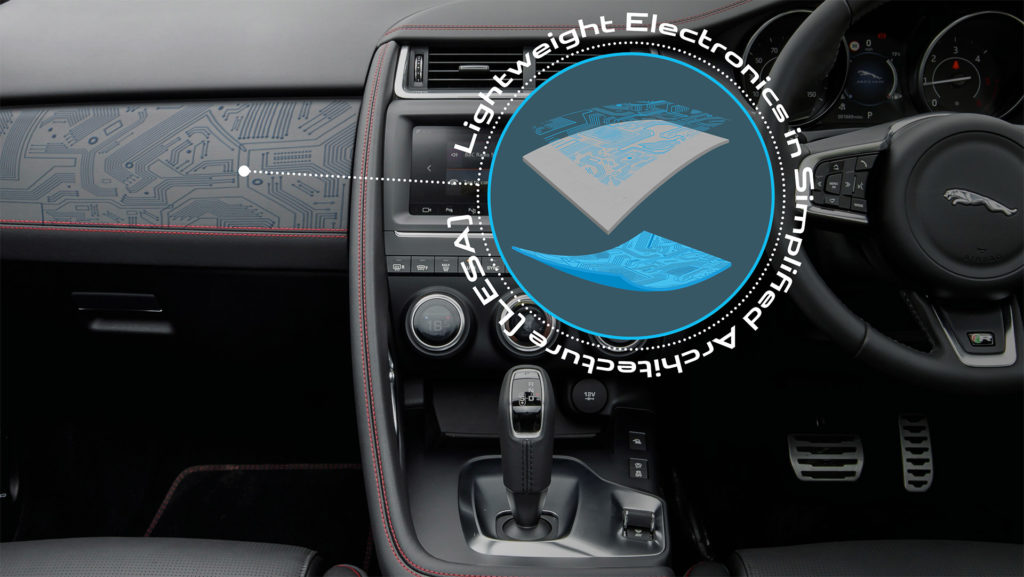As the market for electric vehicles continues is inexorable progress, so we can start to see true innovation in other areas – from tyres and in-car audio to automated controls and advanced navigation. Now the Institution of Engineering and Technology (IET) has recognised the work being done by Jaguar Land Rover's electrical research team with an award for its LESA technology. WhichEV takes a look inside the cockpit of tomorrow.
The advances being made, centre on Lightweight Electronics in Simplified Architecture (LESA) research. That's the kind of technology that's currently being used in flexible wearables and curved OLED TVs. The difference here is that Jaguar Land Rover's team is applying curved electronic circuits and screens to the dashboard and internal structure. But there's another twist.
Traditionally, car structures are built and engines fitted, while electronics are added nearer the end of the production line. LESA turns that model on its head. Special software and production techniques lets the engineers:-
- Add electronics to any part of the car's interior or exterior panels
- ‘Unpack' that 3D section of the car into a relatively flat/2D design
- Modelled the circuitry and displays on the computer, before being ‘printed' onto the flat surface
- That surface is then ‘refolded' back into a 3D/real world physical shape that will be used for final production/assembly
The result is a panel with all the necessary electronics embedded within its structure – including a display panel for driver-facing surfaces or a solar panel for exterior-facing surfaces.
Replacing conventional panels with advanced, curved display screens and embedding the necessary circuits into the structure of the car itself, means a potential weight saving of up to 60% for those areas.
Ashutosh Tomar, Jaguar Land Rover Electrical Research Technical Manager, said: “We believe LESA represents the future of vehicle electronics. It will enable us to design and manufacture innovative, flexible and customisable cabins for our customers while also reducing weight and cost during production helping us reach Destination Zero”.
Taking the idea further, there's no reason why the roof and other panels of a car couldn't have solar technology embedded during the construction process. Opening up the possibility for continuous recharging and range improvement – without the need to add additional weight for the solar cells themselves.
With reduced weight, Jaguar's future electric vehicles will benefit from increased range, helping to further the company’s goal of a zero emissions future. This stated ambition is ‘Destination Zero', where the environment is made cleaner through relentless innovation.
In awarding Jaguar's LESA technology, the IET judges said that this invention was, “The future of electronics in the car”.
